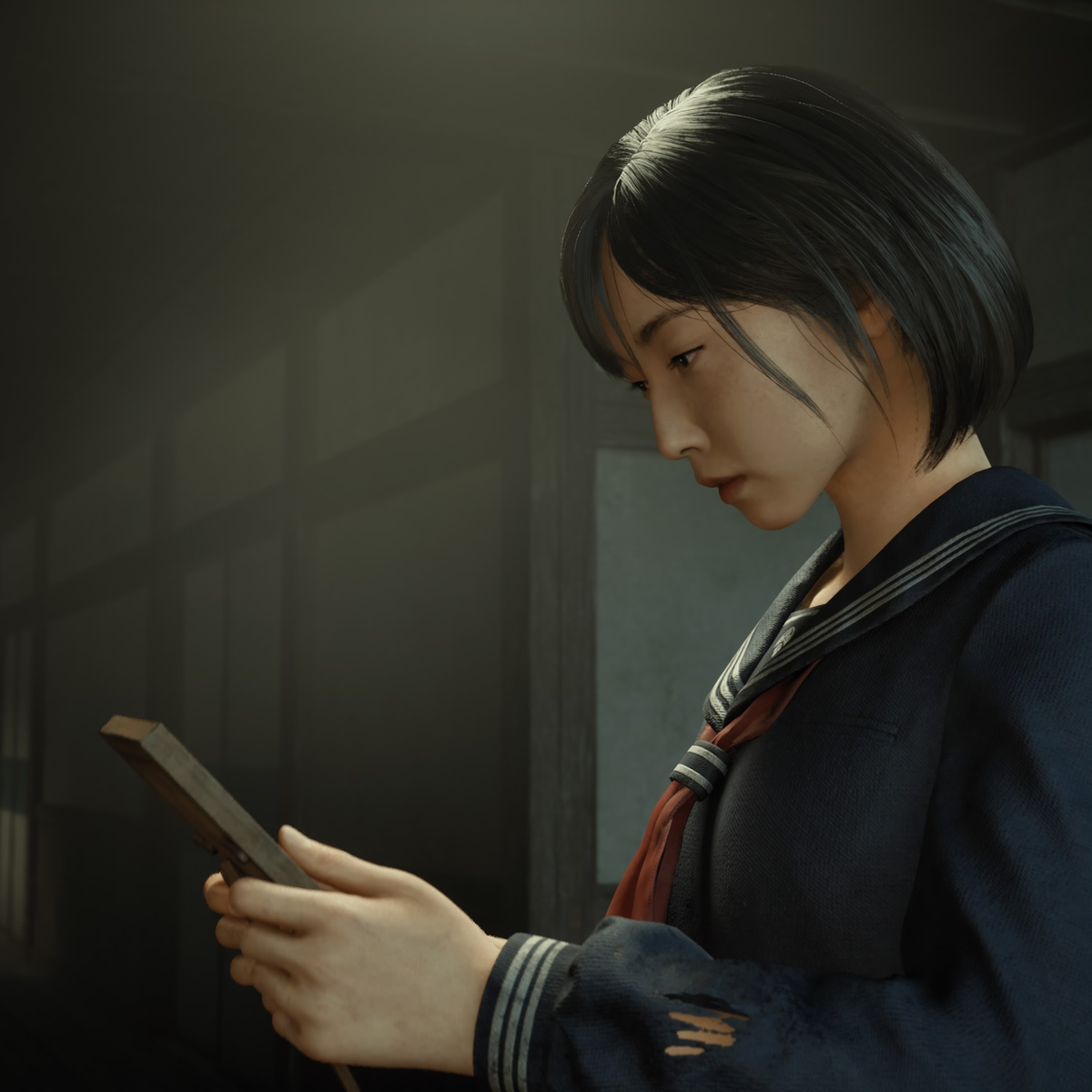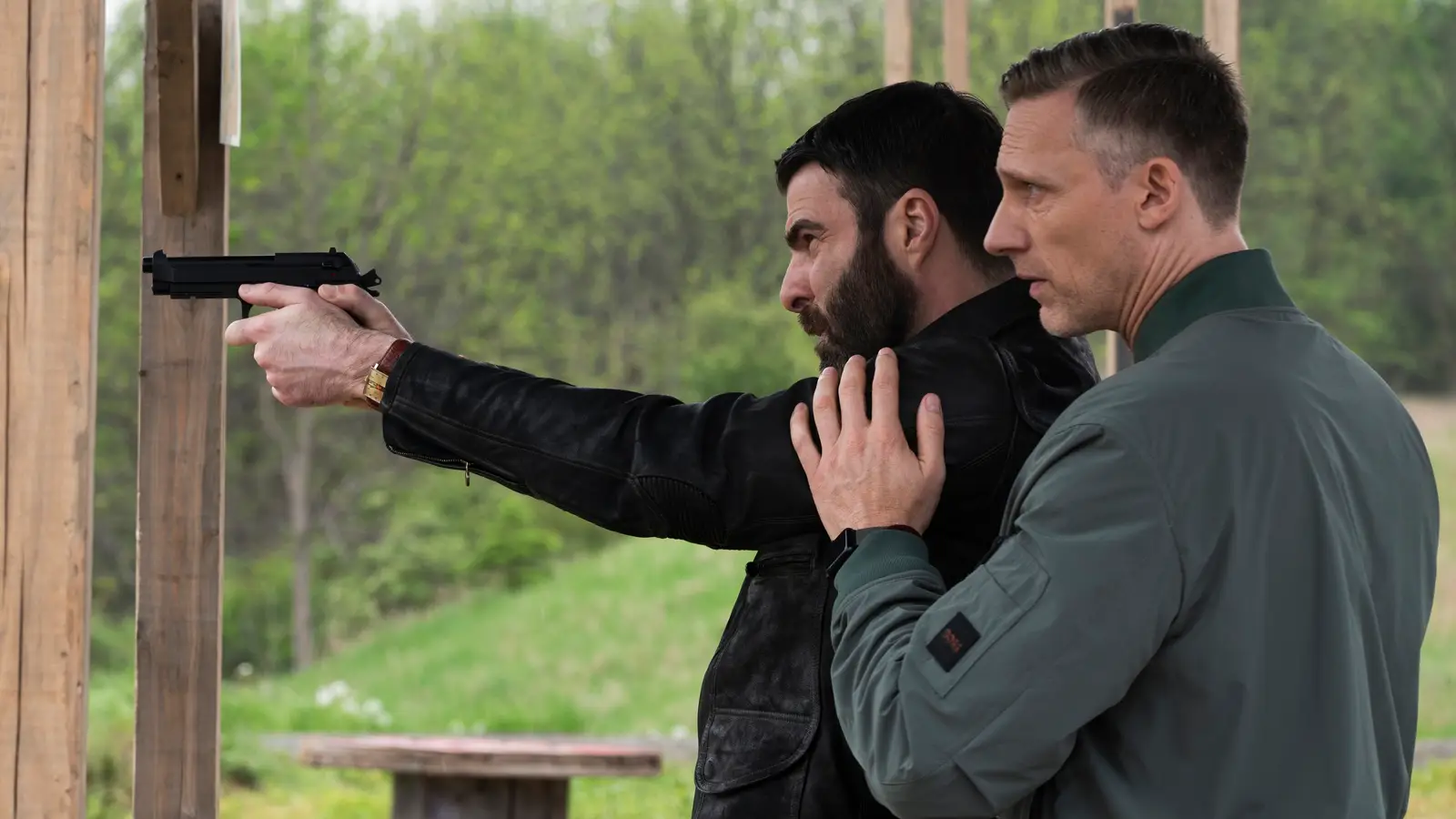By Vikki Blake
Copyright eurogamer

If you take nothing else from me today, just take these three words: stick with it.
If you’d sidled up to me halfway through Silent Hill f, I probably would’ve dropped my voice and advised you to wait for a sale. All the whiny teenage angst is winding me up, and is also more than faintly reminiscent of Silent Hill’s free teaser, The Short Message. I don’t like the combat. For the last hour, I’ve been unsuccessfully playing Inventory Management Sim, spent an embarrassing amount of time lost in a field, and I still can’t really work out what the hell is going on. The (also embarrassing) time I’ve spent wandering through the misty streets of Silent Hill over the years is seemingly of no benefit here, either. In fact, if it wasn’t for Akira Yamaoka et al’s score – which is less recognisably Silent Hill than I’ve ever heard before – I wouldn’t have thought Silent Hill f was a Silent Hill game at all. Which is kind of weird. You know. For a Silent Hill game.
I don’t say that to be difficult. I’m not the fan who only ever wants Silent Hill 2 over and over again (although let’s face it, Remake was exquisite), I don’t automatically despise anything that’s been made by a western studio, but I also don’t blindly accept that everything with Silent Hill on the cover is any good, either (sorry, Ascension). So I came into Silent Hill f cautious, but optimistic.
But first, some context! Silent Hill f places us in the neat school shoes of teenager Hinako. For reasons that may or may not be explained later, her provincial town, Ebisugaoka, is suddenly submerged into a mysterious fog. The pavements bubble and blister with strange crimson flora, and sinewy strings hang from rooftops like macabre bunting. Unidentifiable fleshy lumps sit about, all haphazard and bloody, as though discarded by a lazy butcher in the sky, but it’s the flowers you need to look out for. One wrong step, and something will curl around your ankle, and you’ll be trypophobia-triggering plant food before you know it.
But none of that is as upsetting as the bloated corpses and twisted marionettes and more – oh-so-much more – that lie in wait across the village. It’s hard to know what’s worse for our Hinako: the deadly denizens or the societal expectations of a teenage girl in 1960s Japan.
But man, those first few hours. People keep doing and saying dumb stuff. The dialogue – teenagery and cringey – is not convincing, and why on earth Hinako and her pals don’t link arms to ensure they stop losing each other in the fog is beyond me. I’d kept myself gloriously spoiler-free coming in, which perhaps means I was less prepared than some for the wild tangents developer NeoBards takes from expected Silent Hill norms, but even the Otherworld is Otherworld-y in a way I absolutely did not expect. Which is again, well, strange. Because if it doesn’t look like a Silent Hill game and doesn’t play like a Silent Hill game, and only sometimes sounds like a Silent Hill game, then is it really a Silent Hill game at all?
And then it just all clicked.
Not the combat, mind you. I still don’t like it. You’ll have heard some compare it to that of Soulslike games, which isn’t quite right. You’ll spend the game with a pipe or a bat or a sledgehammer in your hand that takes forever to swing, even if you commit to the ostensibly quicker light attacks. The more you attack, the faster you’ll deplete your sad little stamina bar. The more you draw on your focus – which is exactly what it says on the tin; a powered-up focused attack – the quicker you’ll lose your sanity. It’s all pretty standard fare, and I did acclimate to the recommended Story difficulty, but I never quite enjoyed it, I’m afraid. By the time I finished, though, I’m pretty sure that’s more a consequence of the degradable weapons than the combat system itself.
I’ve spent a good chunk of my life in horror games, and know there’s a constant tension between feeling fearful and carefree, which inevitably requires the need to ration health items and weapons as well as liberally deploying ‘Run away! Run away!’ strategies. And while this is fine when you’re, say, fighting enemies outside, when you’re indoors – or in a tight alleyway – it becomes much harder to do that. The more you fight, the faster you’ll exhaust your piddly collection of weapons (you’ll only ever be able to carry three, along with a handful of toolkits to sort-of repair them), which means there was a good fifteens minutes segment where I had no weapon at all, leaving me with absolutely no way to defend myself other than to dodge myself dizzy and hope I make it out alive. Hinako wouldn’t even raise a fist.
Your frustration levels may vary depending on how much time you spend with Soulslike games, but for me, SHf’s combat isn’t challenging as much as it’s clunky. I had attacks phase through targets without a dent, dodges not dodge, and never seemed to have enough bloody stamina, even by the endgame. And when she comes out of a dodge, Hinako stands there until you remind her that she’s supposed to be running for her life – it becomes a self-defeating move, often leaving you wide open for a deadly own goal.
The most grievous crime, though: as a long-time Silent Hill fan, it’s extraordinarily difficult to do any real exploration of the world. The grim cocktail of clumsy combat, degradable weapons, and ferocious enemies makes it extraordinarily difficult to do so. That said, about halfway through, you’ll land yourself an Otherworldly, er, upgrade (of sorts). Even if I could tell you about it I wouldn’t, but I will admit that it brought a new twist to combat that I was not expecting, but was very happy to have. Let’s leave it at that.
As for the enemy you’ll find yourself fighting more than any other? The one you’ll never quite get under control? Your inventory.
There are three things you can do when you reach a shrine: save, enshrine, and pray. The latter two ostensibly allow you to upgrade your health, stamina, and sanity bars, although doing so requires you to sacrifice the meagre collection of goodies you’ve amassed as ‘offerings’ or locate one of the vanishingly few ’emas’ found secreted across the game. Initially, I felt as though I’d never have enough items to sacrifice to build up my Faith deposit (the closest the game has to a currency), and later, I’d amassed loads of Faith, but must’ve missed some emas, so I couldn’t upgrade anything. Ho hum.
You can also utilise a pool of passive skills in the form of Omanoris that you pick up along the way, although I have very little else to say on that given I barely touched them after finding one that helped boost Hinako’s stamina a bit.
I don’t think I’d care as much about Hinako’s tight inventory if we were able to pick and choose what we take and what we leave behind, but switch a bandage to make room for a first aid kit, for example, and that bandage will be gone forever. And sure, some stuff stacks, but many others do not, so it’s particularly galling that you have to make room in your minuscule inventory for those aforementioned offerings, too.
I can’t even tell you what they all do, either. You can recover health, sanity, and stamina in different amounts and ways. Some of it’s pretty self-explanatory – bandages, first aid kits, and so on – whereas the rest, such as Divine Water (fully restores Max Sanity and reduces Sanity drain for a bit), Ramune (greatly restores Max Sanity), Arare (slightly restores Health, but the effect increases when used continuously) are more difficult to keep track of at the best of times. At their worst – say, when you’re in the heat of battle and your pop-up inventory only shows you a tiny icon – they’re infuriating.
And yet there I was, teeth clenched, beating a bulbous…. something – I don’t even know how to describe it! – to death with a crowbar, absolutely hell-bent on seeing this through to the end. I had to see it through. Hinako’s story took a wild pivot the moment I realised what was happening in her Otherworld, and halfway through this bewildering adventure, I realised how stupid I’d been for chalking this up to nowt more than a teen drama with a Silent Hill logo slapped on top of it.
Yes, SHf deliberately side-steps much of what makes Silent Hill games Silent Hill – there’s no torch, no radio static, not even any rust – but that doesn’t mean it’s a misstep. Its world is still tense and atmospheric. The monsters delight and disgust in equal measure. The ambient sounds are genuinely terrifying. It’s not the same as Silent Hill 2 Remake, no, and I don’t think it’s as scary, but it’s every bit as unsettling, believe me.
It’s almost as though the second half of the game is your reward for getting through the first, pivoting in such devilishly dark ways I couldn’t have predicted it if there was a gun at my head.
Hinako’s Otherworld may not look like any Otherworld we’ve seen before, given the rusty fences and blood-smeared grates have been replaced by dark temples and shrines, but it feels every bit as foreboding. Slowly, methodically, you’ll piece together what, exactly, brought Hinako to this place, and over a number of Otherworldly visits (visits that do not include degradable weapons: huzzah!) you’ll learn things about her you may never have suspected, and even more about what more she’s prepared to sacrifice… both literally and figuratively. Whereas other Silent Hill games have essentially presented a Western idea of horror, SHf unapologetically embraces its roots in ways I couldn’t even imagine. And it’s here, in the unmentionable and often indescribable parts of Silent Hill f, that writer Ryukishi07’s profoundly unsettling story really shines.
So while no, this doesn’t negate the clumsy combat, per se, it makes that first-half slog more than worth it.
Plus, it’s a beautiful place when it’s not scaring the bejesus out of you, rich with detail and interest. There’s a fair bit of backtracking – which again, makes that tiny inventory that much more of an issue; a number of times I cleared a place out and discarded an item to make room for another, thinking I’d never be there again, only to return two hours later and could’ve desperately done with it – but you’ll get to poke about in all kinds of places across Ebisugaoka, even if you’re rarely rewarded for stepping off the beaten path. And in keeping with its predecessors, Silent Hill f is not overt with its messaging, which means you should make a point of scouring for discarded notes and checking in with Hinako’s journal as you meander across town.
Talking of Hinako’s journal: it’s a lifeline when it comes to SHf’s puzzles. I played on Hard – the recommended setting for those looking for a “traditional Silent Hill experience” – and found all but one early scary(crow – if you know, you know) puzzle and the final brain teaser a breeze, thanks to the copious notes Hinako jots down as she goes. The environmental puzzling was tougher – figure out how to get here, do that, now go there, etc. – but again, not overly taxing, making it probably one of the easiest Silent Hill games thus far in this respect.
It’s not the puzzles that are going to make or break Silent Hill f, though – it’ll be that combat. I stand here as someone with average-ish dexterity, poor impulse control, and a core-deep hatred of boss fights, so I like to think that if I can get through it, most of the series’s older fans should cope okay, too, despite the surprising decision to omit an easy mode. For different reasons, the story – and several of its gobsmacking cinematic sequences – similarly requires a strong stomach. Silent Hill has never shied away from mature and complex themes, so it may be prudent to note the content warning when you boot up. (To that end: it advises there’ll be depictions of gender discrimination, child abuse, bullying, drug-induced hallucinations, torture, and graphic violence – and boy howdy, do they deliver on that, as well as trypophobia, which is not listed in the content warning but will absolutely be a deal-breaker for some. Proceed with caution.)
There’s more I want to tell you, of course. Loads, actually, although I’m not convinced you’d believe half of what I witnessed in the twelve-ish hours it took to reach the end. I want to talk about the enemies, the Otherworld, and the multiple endings. But even if Konami’s barbed wire-laden embargo wasn’t preventing me from telling you more, I wouldn’t want to spoil the surprise, anyway. You really should experience Silent Hill f’s final act for yourself.
And given that, I’ll conclude as I started, and leave you three more words to take away: Don’t read anymore. If this has left you curious, close this tab, avoid social media and further reviews or streams, and let yourself experience Silent Hill f first hand. You’ll either thank me for it or hate me for it, but either way, you’ll have a hell of a time.
A copy of Silent Hill f was provided for this review by Konami.



